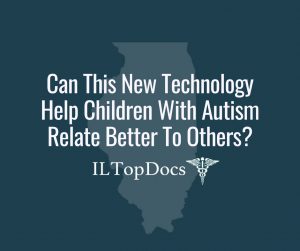Can This New Technology Help Children With Autism Relate Better To Others?
Children living with autism struggle reading nonverbal cues from others within facial expressions. This struggle creates such a strong disability that children tend to falter with social interactions and resist making eye contact at all.
When it seems like people react in unreasonable and unexpected ways, the world starts to become a terrifying place for those with Autism.
Until now, autism therapy was the only source of relief for these children. Autism therapy teaches how to better understand emotions and social cues, but due to the lack of autism practitioners, children couldn’t always access the help they needed. Even if a child did obtain therapy sessions, it often wasn’t during the period of time when their brain was the most adaptable.
With the new advances in technology and the creation of Google Glass, children with Autism may now have a better chance to relate to others and understand subtle cues from people’s facial expressions. Google Glass has a facial recognition app which makes emotions easier to read. The smartglass app scans faces and recognizes the eight core facial expressions. The emotions include happiness, sadness, anger, disgust, surprise, fear, neutral, and contempt. To help the autistic child identify the expressions of those their with, the glasses display an emoticon in their peripheral vision.
According to the developer of the app, the smartglasses have three features:
- Free Play – which recognizes facial cues as children interact with their families
- Guess The Emotion – which asks the child to read the face of a parent who’s acting out one of the eight core facial expressions
- Capture The Smile – which asks the child to give another person clues about the emotion they want to see until the other person acts it out. This feature is meant to help gauge the child’s understanding of the emotions.
The initial study which included 14 children who used the smartglass app for at least three 20-minute sessions per week over six weeks, resulted in 12 out of the 14 children making meaningful improvement in their eye contact. On average, the children improved in their overall autism symptoms and 6 participants moved up in the autism spectrum classification due to use of the smartglass app.
Could this new app be what provides hope for those with Autism?
The advancements and healing capabilities technology can provide is continuously gaining momentum and I can’t wait to see what comes next.


